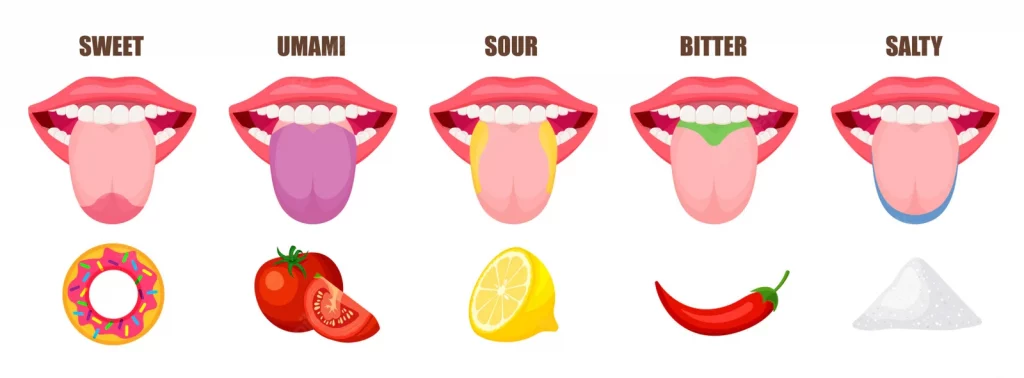
The Science of Taste A Flavorful Exploration
Taste, one of our five senses, is a complex sensation that involves both our taste buds and our sense of smell. While we often associate taste with the tongue, the nose plays a crucial role in our perception of flavor.
The Taste Buds
Our taste buds are located on the surface of the tongue, primarily in small bumps called papillae. These taste buds are sensitive to five basic tastes: sweet, sour, salty, bitter, and umami.
- Sweet: Detected by the tip of the tongue.
- Sour: Detected by the sides of the tongue.
- Salty: Detected by the front of the tongue.
- Bitter: Detected by the back of the tongue.
- Umami: A savory taste often associated with meat, mushrooms, and aged cheeses.
The Role of Smell
The sense of smell, also known as olfaction, plays a significant role in our perception of flavor. When we eat food, molecules from the food enter our nasal cavity and interact with olfactory receptors. These receptors send signals to the brain, which interprets them as flavor.
Factors Affecting Taste
Several factors can influence our perception of taste, including:
- Temperature: The temperature of food can affect its flavor. For example, hot coffee tastes different than cold coffee.
- Texture: The texture of food can influence its perceived flavor. A crispy texture can enhance the flavor of a dish, while a mushy texture can detract from it.
- Fat: Fat can help to release and carry flavors, making food taste more flavorful.
- Acidity: The acidity of a dish can balance out sweetness and richness.
- Saltiness: Salt enhances the flavor of food and can help to balance other tastes.
The Future of Taste
As our understanding of taste and flavor perception grows, we can expect to see new and innovative ways to enhance the flavor of food. Advances in technology may also lead to the creation of artificial flavors that mimic the taste of natural ingredients.
In conclusion, taste is a complex and subjective experience that is influenced by a variety of factors. By understanding the science of taste, we can better appreciate the nuances and complexities of the foods we enjoy.





